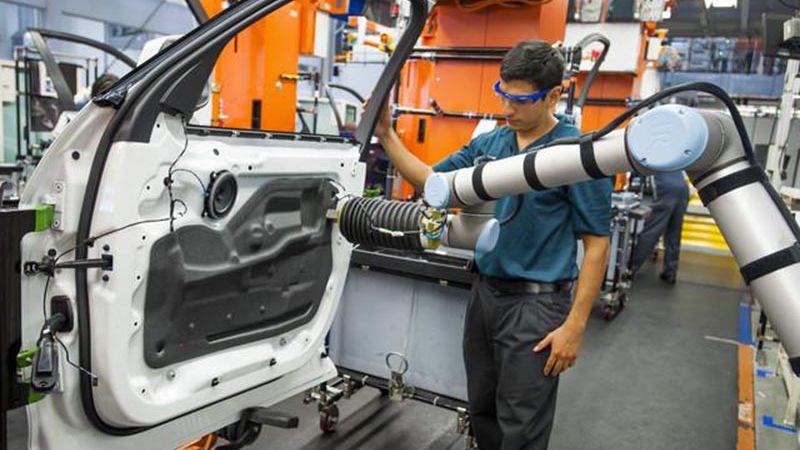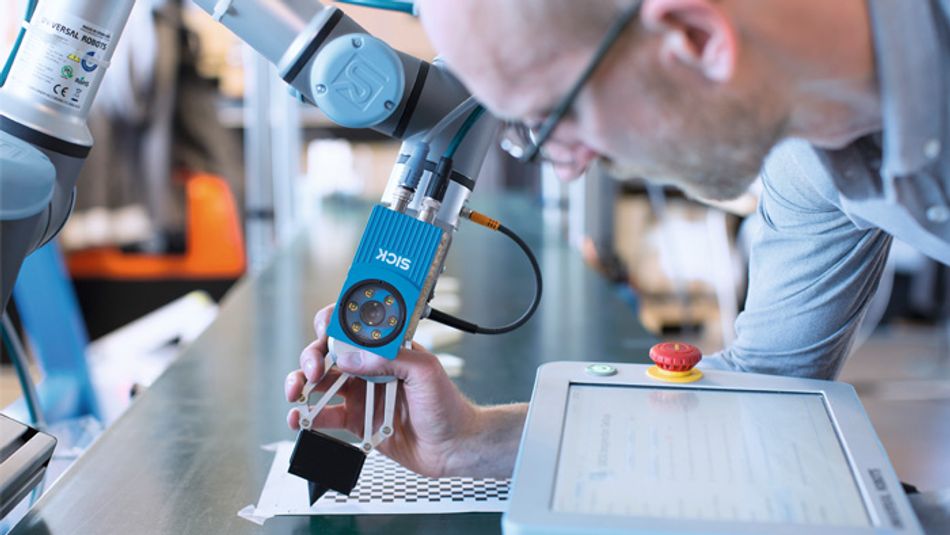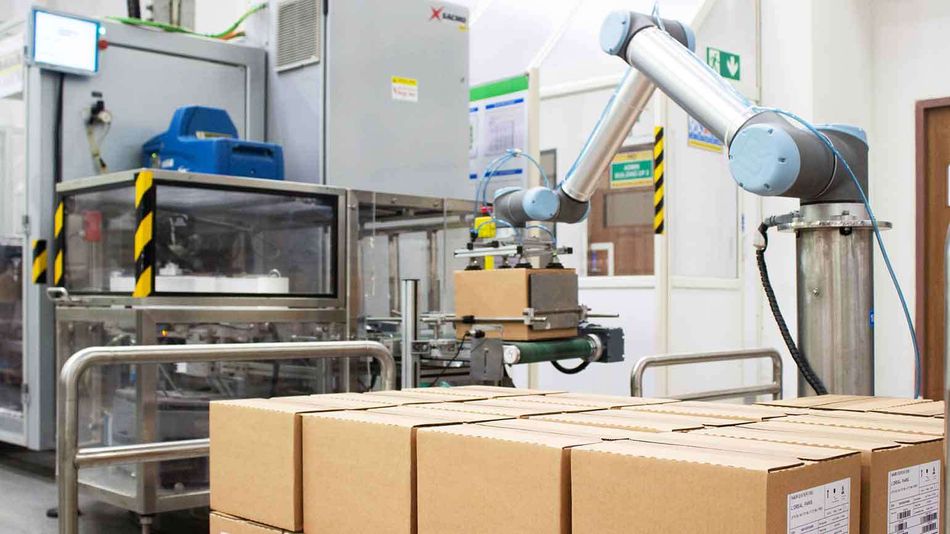Technologies Converge to Help Drive Manufacturing Applications
Article 5 of our Cobot Series: Traditionally, robotics have served limited roles in manufacturing environments; however, various technologies have converged to make robots work well as collaborators with humans and to succeed in various applications.

Image: Manufacturing Tomorrow
This is the fifth article of an eight-part series that explores how collaborative robots or cobots are transforming industrial workspaces. It will survey the technologies that have converged to make robotic influence possible, unpack the unique engineering challenges robotics pose, and describe the solutions that are leading the way to the influential robots of the future.
The articles were originally published in an e-magazine, and have been substantially edited by Wevolver to update them and make them available on the Wevolver platform. This series is sponsored by Mouser, an online distributor of electronic components. Through their sponsorship, Mouser Electronics supports spreading knowledge about collaborative robots.
Introduction
A new generation of robots, termed “collaborative robots” or “cobots,” is now being integrated into manufacturing environments. Rather than being used to replace human labor, these robots are being used to work together with humans in a common workspace. These cobots are typically used on tasks that require improved process control and/or greater flexibility, scalability, and agility. To enable cobots to work together with the human workforce, numerous improvements have been incorporated to enhance worker safety. The result is increased productivity and better labor utilization at lower overall costs. Consequently, these cobots are affordable for small- and medium-sized companies to support lower-speed, lower-volume production runs. This article examines some of the technological advancements that enable collaborative robotics and provides some examples of how these cobots are being used in a manufacturing environment.
Enabling Technologies
Collaborative robotic platforms incorporate numerous enabling technologies that differentiate them from traditional robots and enhance human/robotic interaction, improve worker safety, and reduce costs. Improvements in sensor, actuator, control, and computation technologies empower the cobot’s perception, data fusion and processing, artificial intelligence, and actuation. Other technologies promote ease of use, adaptability, and lower costs. A brief overview of some of these technologies follows:
Perception
Technologies that improve perception include sensors that can detect and measure any physical property, such as distance, proximity, force, torque, velocity, sound, vibration, volume, weight, surface finish, texture, chemical composition, temperature, electrical current, and magnetism. Other technologies, such as machine vision, allow the cobot to detect and identify objects, spaces, scenes, orientations, and locations of objects in the visible, infrared, and ultraviolet wavelengths. Together, these perception technologies allow improved accuracy, higher throughput, collision avoidance, and situational awareness. Voice recognition and motion tracking technologies may also allow operators to control the cobot through voice commands and hand gestures.
Data Fusion and Processing
Raw data from numerous sensors must be integrated, processed, and interpreted to enable the cobot to make informed and accurate deductions about the environment so that appropriate actions can be taken. This must be rapidly accomplished to avoid undue delays in the robot’s operation, especially if the robot needs to interrupt its operation to avoid a collision with an object or human. Sensor-fusion algorithms must effectively integrate data from different types of sensors, which may come from different locations within the workspace or may be sensed at different times to make informed and accurate deductions about the environment and situation.
Artificial Intelligence
A traditional robot operates according to preprogramed instructions that are repeated without regard to changes in its operational environment. A cobot, on the other hand, incorporates artificial intelligence (AI), which encompasses its ability to perceive its environment; reason and solve problems; recognize, learn, and adapt to new situations and environments; autonomously make decisions; and interact with humans. The “programming” of a cobot to operate in a new environment is not necessarily complicated and can simply involve a human operator manually walking through the desired motion by moving the cobot’s arms through the desired trajectory. AI is enabled through high-speed computer processors and software that may incorporate a variety of technologies such as fuzzy logic, probabilistic methods, neural networks, and expert systems. These technologies provide cobots with human-like qualities that promote human-robot interaction and collaboration.
Actuators
While traditional robots have very stiff joints with high force, high torque actuation devices, cobots have compliant joints that can provide smooth or soft motions and forces, so they may seamlessly interact with their human counterparts. Compliant actuators do not require expensive, high-precision drive mechanisms or motion sensors, as they rely on force or current feedback to compensate for potential errors in position accuracy. Furthermore, since cobots are lighter and designed to work with humans in a shared workspace, they do not need the expensive high-force actuation devices or motor drives that are commonly used in traditional robots.
Applications
New applications for collaborative robotics within manufacturing continue to develop and expand. Because cobots are affordable, highly adaptable, and almost plug-and-play capable, small- and medium-sized manufacturers are eager to take on this technology. Some of these notable applications include the following:
Machine Tending
A typical production machine, such as the kind used for computer numerical control (CNC) machining, must continuously be tended by an operator who will load raw material, start the machine, ensure its proper operation, and unload finished parts. Machine tending is one of the most common industrial jobs. Often monotonous and boring, it does not require a high skill level, and operators are prone to injury due to the repetitive lifting of heavy materials and parts. Other examples of machine tending operations include traditional machining operations (e.g., stamping, grinding, trimming, and welding), injection molding, printed circuit board (PCB) testing, part inspecting, and coordinate measuring.
Cobots may be an ideal fit for machine tending applications. They can be placed in front of a traditional manufacturing machine and easily programmed to perform the required loading and unloading tasks. Periodically, skilled technicians can examine the machine and tools and perform regular maintenance. This can lead to better workforce utilization, where the cobots are used for the lower-skill-level manual operations and technicians are used for the higher-skill-level tasks such as inspecting, repairing, and changing tools, performing quality control tests, and taking appropriate corrective actions. This, in turn, can result in significant labor savings, lower injury rates, less production downtime, a more motivated and skilled workforce, and higher productivity.
Packaging and Palletizing
Packaging and palletizing tasks typically involve the removal of products from an assembly line or conveyor belt, counting and wrapping them appropriately, applying labels, placing them into cartons, and sealing the cartons. High-speed, high-volume manufacturers can create specialized robotic machines and equipment for packaging. On the other hand, small to medium companies may still require manual packaging operations since automated equipment may not be cost-effective due to limited production runs or variations in product form factors.
Cobots may be an ideal fit for such packaging and palletizing applications. They can be easily programmed to recognize and count items on a conveyor belt, apply packaging materials and labels, and place them into the appropriate cartons. Human workers can still work with the cobots while performing higher-skill-level tasks such as quality-control inspections. Programming for the cobot can be easily modified to adapt to changes in the product configuration or packaging requirements.
Collaborative or Adaptive Assembly
Traditional (pick and place) robots require the precise location of the unfinished assemblies and parts. Cobots, on the other hand, are adaptable to non-precise placement, as they might incorporate vision systems that facilitate position feedback. A collaborative or adaptive assembly operation may involve use of a human operator to first inspect, sort, and select a particular part then roughly align the part onto an unfinished assembly (that is, a work-in-progress). In a subsequent assembly step, a cobot would complete the assembly by fastening the part to the unfinished assembly. An operation such as this might be advantageous in situations where parts are too small to align with unaided human vision; or where the final alignment and attachment of the part requires a great deal of dexterity or strength; or where final assembly must be performed at high temperatures, in a difficult environment, or with hazardous chemicals or adhesives. A cobot would, therefore, be useful if the location, orientation, or placement of parts onto an unfinished assembly is not accurate or repeatable.
Human Augmentation
Collaborative robots can be used to augment human capabilities during manufacturing and assembly operations by assisting in the performance of menial (repetitive) tasks or tasks that require strength or extended reach. For example, certain manufacturing operations might require lifting and positioning a heavy part, like an automobile door, onto an unfinished assembly, like an automobile body. Such a process might not lend itself to a completely automated operation if it requires fine adjustments to the part position to ensure the part properly fits onto the unfinished assembly. For example, in an automobile assembly operation, different vehicle styles might require varying amounts and styles of doors for installation, which may not be a suitable situation for a completely automated process. However, a cobot can be useful in this situation to lift the heavy part. It could then carry out “instructions” from the human operator by responding to the operator’s touch and move to position the part on the desired location of the unfinished assembly.
Conclusion
These are only a few examples that illustrate the role of collaborative robotics in manufacturing. As enabling robotic technologies in the areas of sensors, actuators, controls, and computation continue to evolve, we expect that more and more manufacturers will continue to adopt collaborative robotic systems into their workplaces. What might the eventual role of cobots be in manufacturing environments? The advancement in its technology and applications continue to unfold.
This article was originally written by Phi Hipol for Mouser and substantially edited by the Wevolver team. It's the fifth article of a series exploring collaborative robots.
Article One introduces collaborative robots.
Article Two describes the history of Industrial Robots.
Article Three gives an overview of collaborative robots sensor technologies.
Article Four examines the balance between cobot safety and productivity.
Article Six explores the challenges of motion control of robotic arms.
Article Seven looks at the potential of AI in cobots.
Article Eight discusses the social impact of cobots.
About the sponsor: Mouser Electronics
Mouser Electronics is a worldwide leading authorized distributor of semiconductors and electronic components for over 800 industry-leading manufacturers. They specialize in the rapid introduction of new products and technologies for design engineers and buyers. Their extensive product offering includes semiconductors, interconnects, passives, and electromechanical components.




